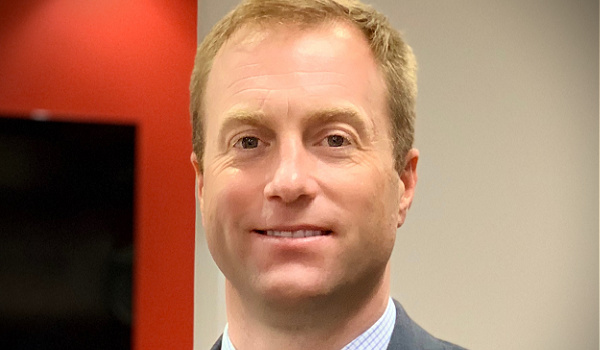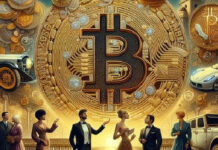Sarson Funds, Inc.
Tokenization is a technology trend with the potential to reshape financial markets, according to John Sarson, CEO and co-founder of Sarson Funds, a cryptocurrency asset manager and information hub for financial advisors, and nowhere is that more apparent than in the world of non-fungible tokens, or NFTs.
An NFT is just a digital token built on a blockchain, like a cryptocurrency, but unlike a cryptocurrency, there’s only one of each NFT. An NFT uses blockchain to enable someone to purchase and authenticate their right to something unique
“That makes an NFT a unique identifier,” said Sarson. “That means an NFT can say you have the rights to an image, movie or song, and it’s indisputable that you have those rights because you have the token.”
As more financial assets, like shares of companies, are tokenized, that means investors will eventually have a digital wallet that can hold tokens representing all of their different types of property and assets in one easily tracked place, and in a manner that makes them easier to value.
Because NFTs are built on the same blockchains as cryptocurrencies like Ethereum, they can also simplify transactions, said Sarson.
“I can ask who wants to buy this piece of art for $10 or $10,000,” said Sarson. “Someone can agree to buy it, then I get the Ethereum, and they get the NFT, and that’s it. There’s no need for any intermediary, there’s no paper work to fill out and no bill of sale.”
The twist is that NFTs can include royalties features that allow the original artist to be paid a percentage of price whenever their work is resold or reproduced.
Crypto art is a particularly interesting area for Sarson. Sarson funds already buys and sells crypto art, including NFTs that are digital representations of historic Barron’s magazine covers.
While crypto art has been around in various forms since 2015, the medium made a huge splash in March as “Everydays : The First 5,000 Days” by Beeple sold for $60.25 million at auction, which cost the buyer $69 million when Christie’s buyer’s premium is included. That made “Everydays” as the most valuable piece of digital art to be sold at auction thus far.
Today, there is a thriving digital art market, said Sarson.
“What happens to digital art? People will hang it up on the walls of their metaverse,” he said. “In games like Minecraft, people can spawn into a virtual world where they can meet friends, talk to them, buy houses and property, and decorate. People are putting art, sports memorabilia, and other collectible objects into their virtual rooms. If someone has a room that’s cool enough and attracts enough visitors, it can become like Times Square – Coke will pay you to include it’s ads on your walls next to your cool digital art.”
As 5G improves connection speeds to mobile devices, virtual worlds and augmented reality are poised to make huge leaps forward in realism, popularity, and ubiquity, said Sarson.
“We’re going to be selling investors digital land, digital sports arena, digital art, digital houses, digital stores and digital museums, and they will all be in the form of NFTs,” he said.
NFTs can also be used to tokenize real estate, for example, transferring ownership of a condo building, or ownership of one individual condo within a building.
“You can just sell it right from your digital wallet to the person who acquires it through an NFT platform token-maker, which will facilitate that transaction just like an escrow agent,” said Sarson. “One side of the transaction fulfills their part of the agreement, the other side does as well, and there’s no need for lawyers to be involved at any point.”
Thus, cryptocurrencies and blockchain technology are poised to remove a lot of overhead from the economy as they shrink the world’s financial and economic infrastructure.
“Do you really think anyone is going to sell anything through a physical title office in the future? The whole idea that blockchains are immutable, meaning you can’t challenge later in court whether or not a blockchain has been altered, makes them superior,” said Sarson. “You can’t argue the blockchain is wrong. It’s better than trying to sell an asset any other way.”
In 2012, the NFT concept was born in the form of Bitcoin’s colored coins – satoshis marked with information that linked them to real-world physical assets. The first real NFT was launched in 201 with the advent of Etheria, a map of tradable tiles upon which structures could be built that was created on the Ethereum blockchain. Then, in 2017, NFTs were popularized with CyberPunks, a series off collectible characters based on Ethereum, culminating in the launch of several NFT marketplaces.
Today, a number of artists and celebrities are selling their work using NFTs, including William Shatner, Elon Musk and Grimes.
“This is a new way of doing business,” said Sarson. “Anyone can go to a site like Token-maker.org and make tokens for $50. So, say I have a company or an RV – I could tokenize them into 100 tokens and sell each token for $1,000 or $100,000 that represents a 1/100 ownership, that can either represent time in the RV, or a share of income that gets produced by the company, which then can be distributed to token-holders through the blockchain.”
NFTs can even allow investors to vote their shares, said Sarson, with votes passing securely up the blockchain.
Because they are built on the blockchain, there is also a digital record of the ownership and transactions that the token was involved in.
“Here’s the ‘A-ha!’ moment for the advisory world: What if all your clients’ collectibles could automatically show up on their financial statements, including when they bought them and how much they paid, without the need for them to tell you,” said Sarson. “If someone bought a collectible like a Picasso, it would show up in their account because there is an NFT attached to that object. It just makes things easier and better, especially if you want to be able to advise on a non-traditional asset like ownership interest in a hedge fund, or a piece of a boat or a one-of-a-kind artwork.”








